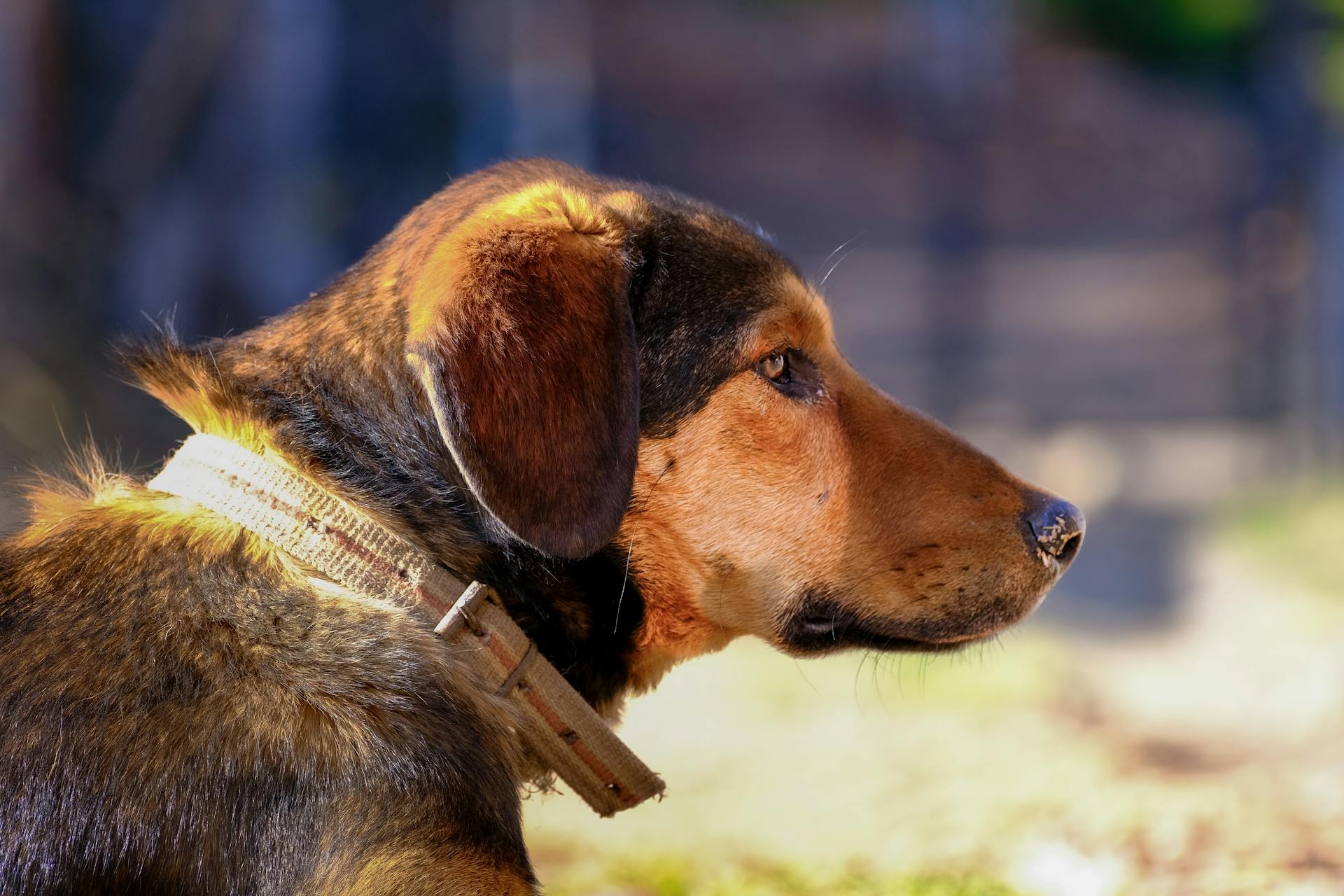
The dog head halter has been a game-changer for many dog owners, allowing them to walk their pets with ease and confidence.
A well-fitted head halter can significantly reduce pulling, making walks a more enjoyable experience for both you and your dog.
The head halter works by applying gentle pressure to the dog's muzzle, which communicates to the dog that pulling is not an option.
This can lead to a significant reduction in pulling, as the dog learns to walk by your side.
By properly fitting and using a head halter, you can help your dog develop good walking habits and strengthen your bond with them.
A fresh viewpoint: Head Halter for Reactive Dogs
What is a Dog Head Halter?
A dog head halter is a tool designed to help train your dog to stop pulling on leash and walk politely to heel.
It's a simple yet effective tool that works by gently guiding your dog's head into a "forward" position, making it physically difficult for them to continue pulling. This design helps to keep your dog's head in a working position, similar to what you'd see at a conformation show.
The head halter typically consists of a strap that goes around the dog's nose and another strap that goes around their neck, just behind the ears. This unique design allows for a firm fit that keeps the head halter in place securely.
A good head halter should have a neck piece that sits just behind the ears, firm enough that only two fingers can slide in comfortably. This ensures that the head halter doesn't flail around or get pushed off the dog's head.
Some head halters come with jaw straps instead of a single thin nose piece, which helps keep the muzzle component in place better and allows for movement of the whole head. This is especially important for strong, tall dogs that might twist and pull on the halter.
A connector to the collar is also a crucial feature, especially for head halters without jaw straps. This ensures that even if the halter slips off, the dog is still connected to an anchoring point.
Here's a summary of the key features to look for in a dog head halter:
- Neck piece sits just behind the ears
- Firm fit with only two fingers able to slide in comfortably
- Jaw straps for added security and movement
- Connector to the collar for added safety
- Swivel action connection point for the lead
Benefits and Safety
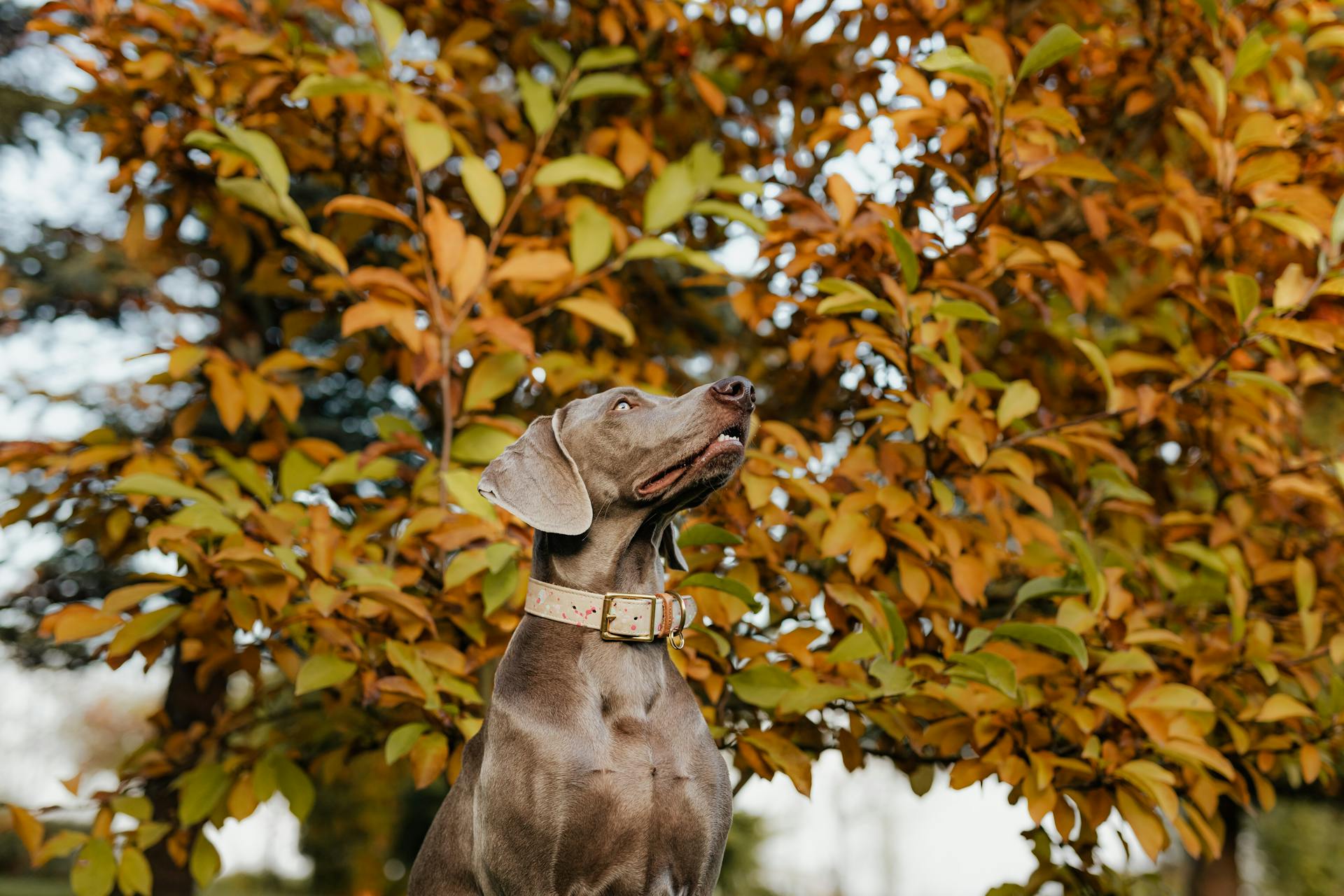
Using a head halter can have a calming effect on some dogs, making them more focused on their owner during training. This is especially helpful when training a dog that gets easily distracted.
Head halters are designed to provide more physical control than standard harnesses or flat collars. They work by gently guiding the dog's head into a slight turn when they pull forward. This can help walk a strong dog that may be difficult to control.
A head halter can also help keep a powerful dog from pulling away or pulling their handler to the ground. By controlling the dog's head, the handler can easily redirect their dog's attention away from a stimulus of interest.
Curious to learn more? Check out: All about Dogs Dog Training
Are Halters Safe?
Head halters are absolutely safe for dogs as long as you follow the fitting instructions. The fit around your dog's neck should be more snug than her normal collar.
Using a double-ended training leash can give you peace of mind if you're worried about your dog slipping out of the head halter. Clip one end to the head halter and another to your dog's regular collar for backup.
Never walk with too long a leash when using a head halter, as this can lead to injury to the neck or spine. A leash of around 4 feet is ideal for close control without the leash being too long.
Are Cruel?
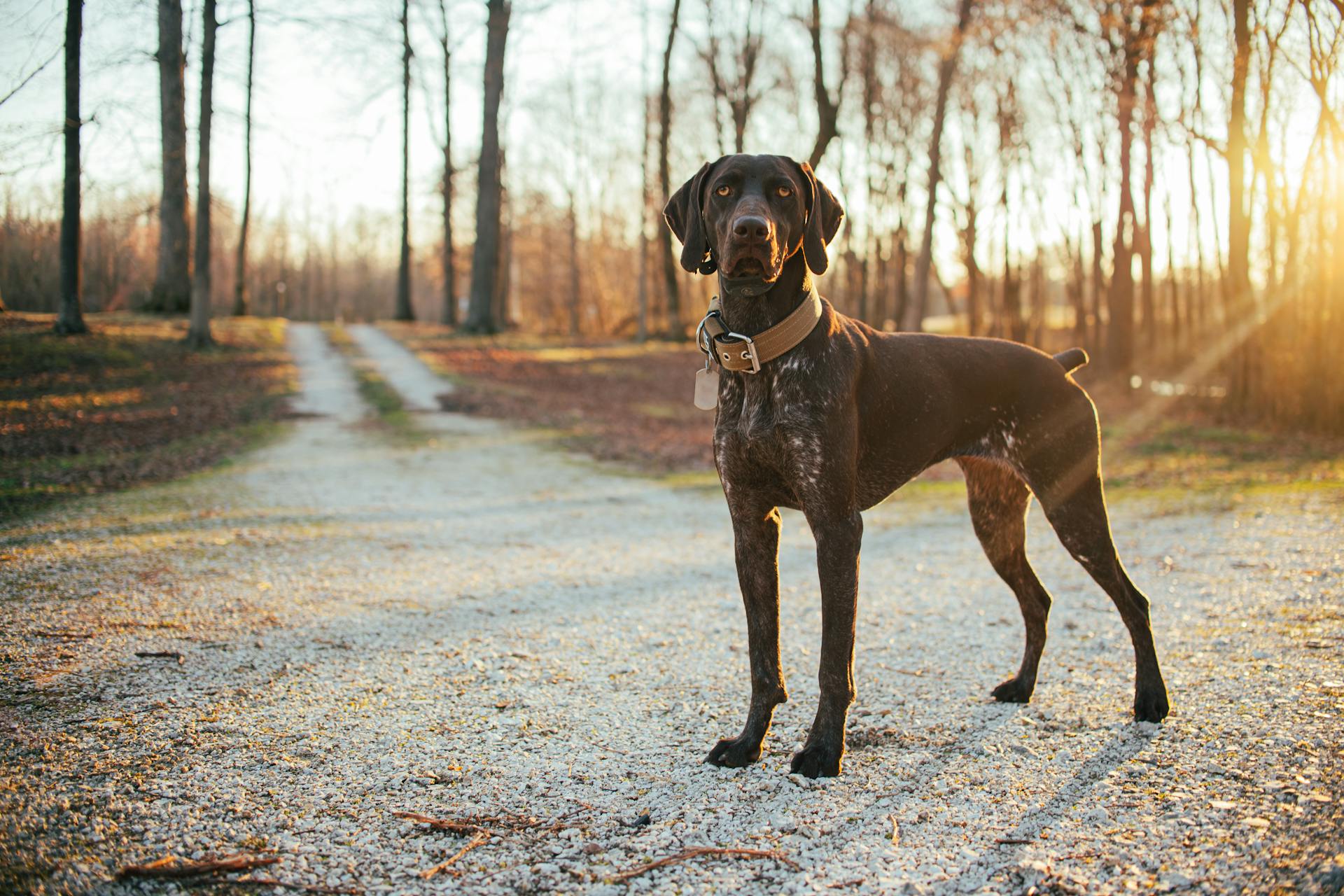
Head halters are not cruel, as they are used by respected organizations like the ASPCA and Irish Guide Dogs. Many dog trainers and veterinarians recommend them for training programs.
The effectiveness of a head halter depends on the person using it and the time they put into training their dog. A gentle 'pressure and release' action is all that's needed when walking your dog.
Head halters that fasten under the chin can close your dog's mouth when pressure is applied, but this isn't necessary for teaching your dog to walk politely.
Benefits Explained
Head halters are a valuable tool for dog owners, and their benefits are numerous. They can help train your dog to walk on a loose leash without pulling, making walks more enjoyable for both you and your dog.
One of the most obvious benefits is that a head halter can help you gain control over your dog more easily, especially in situations where they might jump or lunge at other dogs, people, or traffic.
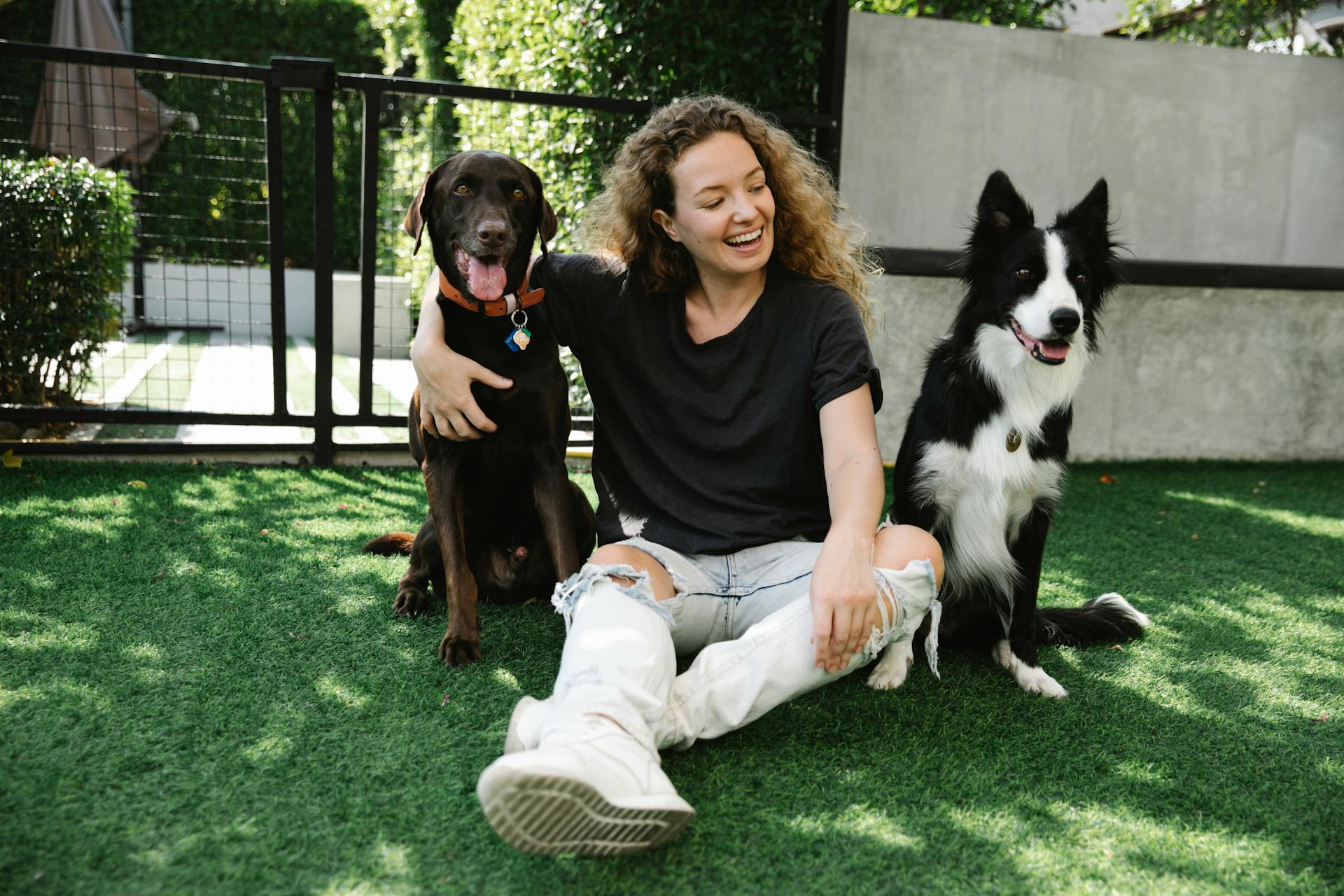
A head halter can also have a calming effect on some dogs, reducing excitement and distraction during training. This allows your dog to focus more on you and learn more effectively.
In addition to training and calming benefits, head halters can also help prevent unwanted behaviors such as picking up waste food or other undesirable items from the floor.
Here are some key benefits of using a head halter:
- Helps train your dog to walk on a loose leash without pulling
- Can help calm excited or distracted dogs
- Provides more physical control over your dog
- Can help prevent unwanted behaviors such as picking up waste food
- Can be beneficial for dogs that jump or lunge at other dogs, people, or traffic
Remember, a head halter is a training tool, not just a control tool. It's essential to use it correctly and in combination with positive reinforcement techniques to achieve the best results.
Your Comfort First
Your dog's comfort should come first when choosing a head halter. Some halters have several straps around your dog's face, while others have just a single noseband, so choose the one that will be most comfortable for your dog's snout.
A padded noseband is a feature of some brands, but it's not always necessary if the fabric over the nose is soft, strong, and comfy. This is a great example of how some products may offer extra features, but they're not always a must-have.

The comfort of your dog is the most important consideration when choosing a head halter. This is because a comfortable halter will make walks more enjoyable for both you and your dog.
If the head halter is loose around your dog's face and you prefer to leave it on, that's okay. The aim is to make walks easier and more enjoyable for both of you.
Choosing and Fitting a Halter
Each brand of head halter includes sizing instructions, so be sure to refer to the package insert to select a good fit or consult with a behavior professional.
A head halter consists of a strap that goes around the dog's nose and usually another strap that goes around their neck, generally just behind the ears.
The fit around your dog's neck should be more snug than her normal collar, and you should be able to get two fingers between the halter and the dog's skin.
The halter should not interfere with your dog's ability to eat treats, pant, drink water, and play with a toy while wearing it.
To ensure a proper fit, the neck piece should sit right up behind the ears and be firm enough that only two fingers can slide in comfortably.
There are two main points of attachment: "Y" and "X". "Y" is the classic point of attachment and is preferred by most people, while "X" is good for dogs with short snouts or those that don't like having the halter under the chin.
Here are the key characteristics to look for in a head halter:
- The neck piece should sit right up behind the ears.
- The fit should be firm enough that only two fingers can slide in comfortably.
- The halter should have a connector to the collar to prevent it from coming off.
- The leash attachment point should be a swivel action connection point for safety.
- The halter should have a clear "on" and "off" design to prevent your dog from getting their paw on the leash and pulling the halter over their head.
Training and Usage
A head halter is not a tool for punishment, but rather a guide to help your dog learn and grow. It's essential to use gentle pressure on the leash, as the head halter will amplify any pressure you apply.
To teach your dog to wear a head halter, start by creating a positive association with the halter. Use high-value treats like shredded BBQ chicken or tiny cheese cubes to make your dog feel comfortable with the halter.
The process of training a dog to wear a head halter can take days, weeks, or even months. Be patient and don't rush the process, as it's crucial to make your dog feel comfortable and secure.
If your dog tries to remove the halter, distract them with treats instead of telling them off. This will help create a positive association with wearing the halter.
To condition your dog to wearing a head halter, establish a positive association with the halter by using your dog's favorite treats. Let them sniff the halter, then fit the collar part around the neck and put the nose band over the nose.
Here are the steps to follow when conditioning your dog to wearing a head halter:
- Establish a positive association with the halter.
- Fitting the collar part around the neck and putting the nose band over the nose.
- Repeat this step a few times, rewarding your dog with treats and praise.
- Once your dog accepts wearing the head halter, let them wear it around the house for short periods with the leash attached.
- Gradually increase the duration and distractions, rewarding your dog with treats and praise.
Remember, a head halter is not a substitute for proper training and socialization. It's essential to use reward-based training methods and be patient with your dog as they learn to wear a head halter.
Alternatives and Combinations
You can combine a head halter with other equipment for added safety and control. Some dogs can slip out of the head halter, so a second leash should be attached to a buckle collar or harness.
A basket muzzle can also be used with a head halter if necessary, such as in regions that require muzzling certain breeds in public or when being transported. The Gentle Leader is the easiest to combine with a basket muzzle due to its fit and strap design.
What Are the Different Types?
There are two main types of head halters: those with the leash attachment under the chin and those with the leash attachment behind the ears.
The Gentle Leader and Halti are examples of halters with the leash attachment under the chin. This design allows you to guide your dog's head by gently pulling the leash to the side.
Lifting the leash upward with an under-the-chin attachment will direct your dog's nose upward. This can be especially helpful when your dog is next to you.
The Canny Collar and NewTrix Easy Way are examples of halters with the leash attachment behind the ears. This design tightens slightly over the bridge of the dog's nose when the leash is pulled.
This triggers the dog to lean back rather than pull forward.
Discover more: What Can You Feed Dogs Instead of Dog Food
Can Other Equipment Combine?

Some dogs can slip out of the head halter, so a second leash should be attached to a buckle collar or harness for safety.
A second leash is a must-have for safety reasons. It's always a good idea to consult a behavior specialist for guidance in fitting and conditioning the head halter—it can be tricky.
The head halter can be combined with a basket muzzle if necessary. This is especially true in regions that require certain dog breeds to be muzzled in public or when being transported.
A Gentle Leader is the easiest to combine with a basket muzzle due to its fit and strap design.
DIY and Accessories
Making a DIY head collar allows you to add as much padding as you like, have the attachment point where you would like it and to have any colours and materials you choose. This flexibility is one of the main advantages of making your own head collar.
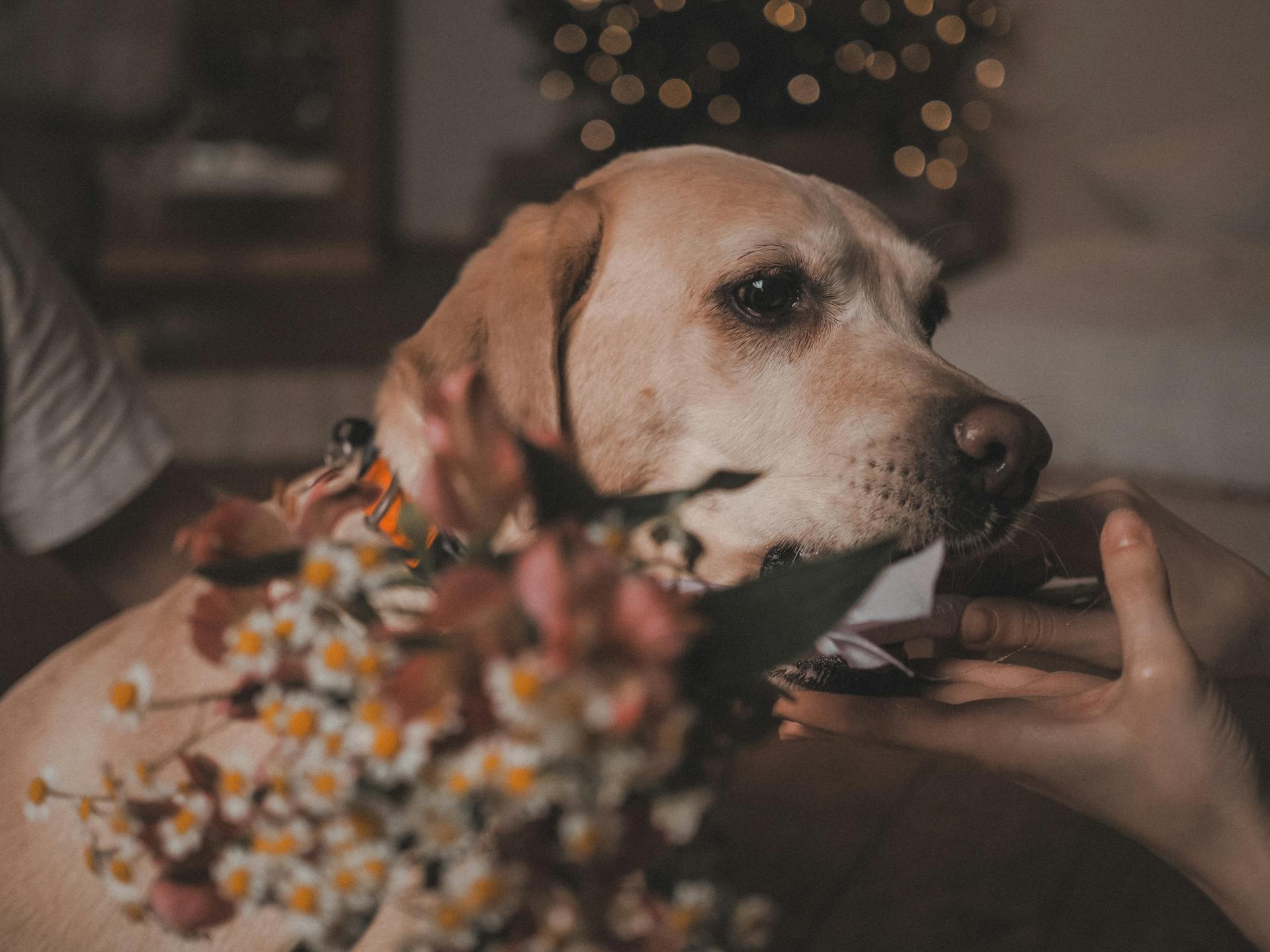
You can consider padding the halter with fleece or soft material to prevent rubbing, and regularly check the halter's fit and condition to ensure it doesn't rub or cut your dog.
Here are some extra things to keep in mind when making or using a DIY head collar:
- Pad the halter with fleece or soft material to prevent rubbing.
- Regularly check the halter's fit and condition.
- Condition your dog to the halter properly.
- Be gentle using the halter, corrections are magnified.
Introduction: DIY
Making a DIY head collar can be a game-changer for dog owners on a budget. Most head collars are over £15 a piece, and that's a lot of money to spend if you're not sure something will work for you.
You can customize a DIY head collar to suit your dog's needs, adding as much padding as you like and choosing the attachment point and colors that work best.
Desensitizing your dog to the head collar is key to successful use. This means rewarding them when you put the head collar on and gradually building up the time they can tolerate it.
Gentle guidance is all that's required when using a head collar – jerk, yank, or harshly tug and you can easily damage a dog's neck.
Step 7: Extras
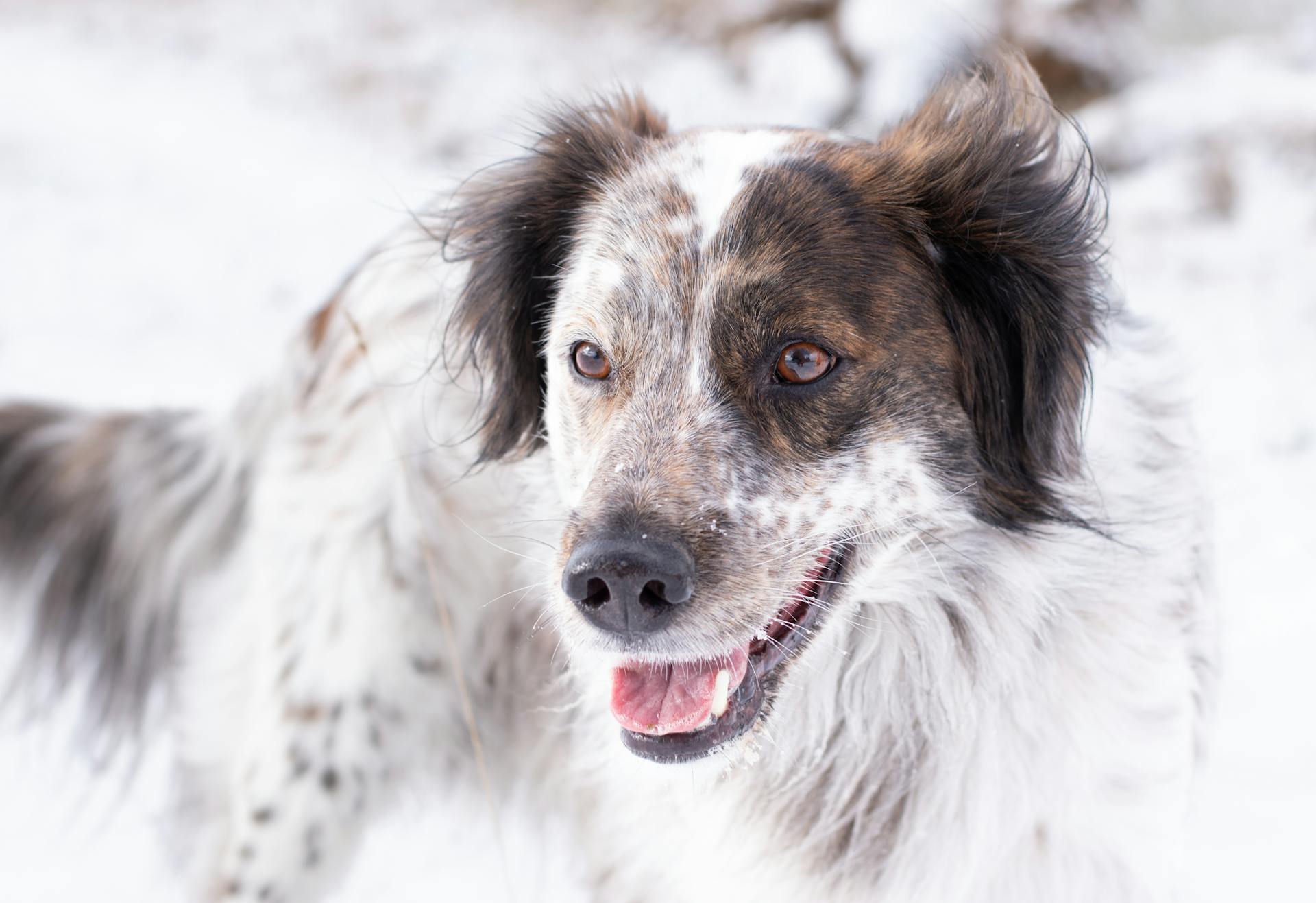
To make the most out of your DIY halter, consider padding it with fleece or soft material to prevent rubbing. This small change can make a big difference in your dog's comfort.
Regularly check the halter's fit and condition to ensure it doesn't rub or cut your dog. A well-fitting halter is essential for your dog's safety and comfort.
Conditioning your dog to the halter is crucial - take it slowly and use plenty of rewards to get your dog used to wearing the halter. You don't want the halter to be associated with stress.
A force-free trainer can be a great resource if you're struggling to train your dog to walk on a halter. They can provide personalized guidance and help you develop a training plan that works for you and your dog.
Be gentle when using the halter - corrections are magnified, so it only takes a small movement to get your dog's attention. Jerking on the leash will most likely end up harming your dog.
Here are some important things to keep in mind when using a halter:
- Never use a halter with an extendable or long lead.
- Never tie your dog out with a halter.
General Information
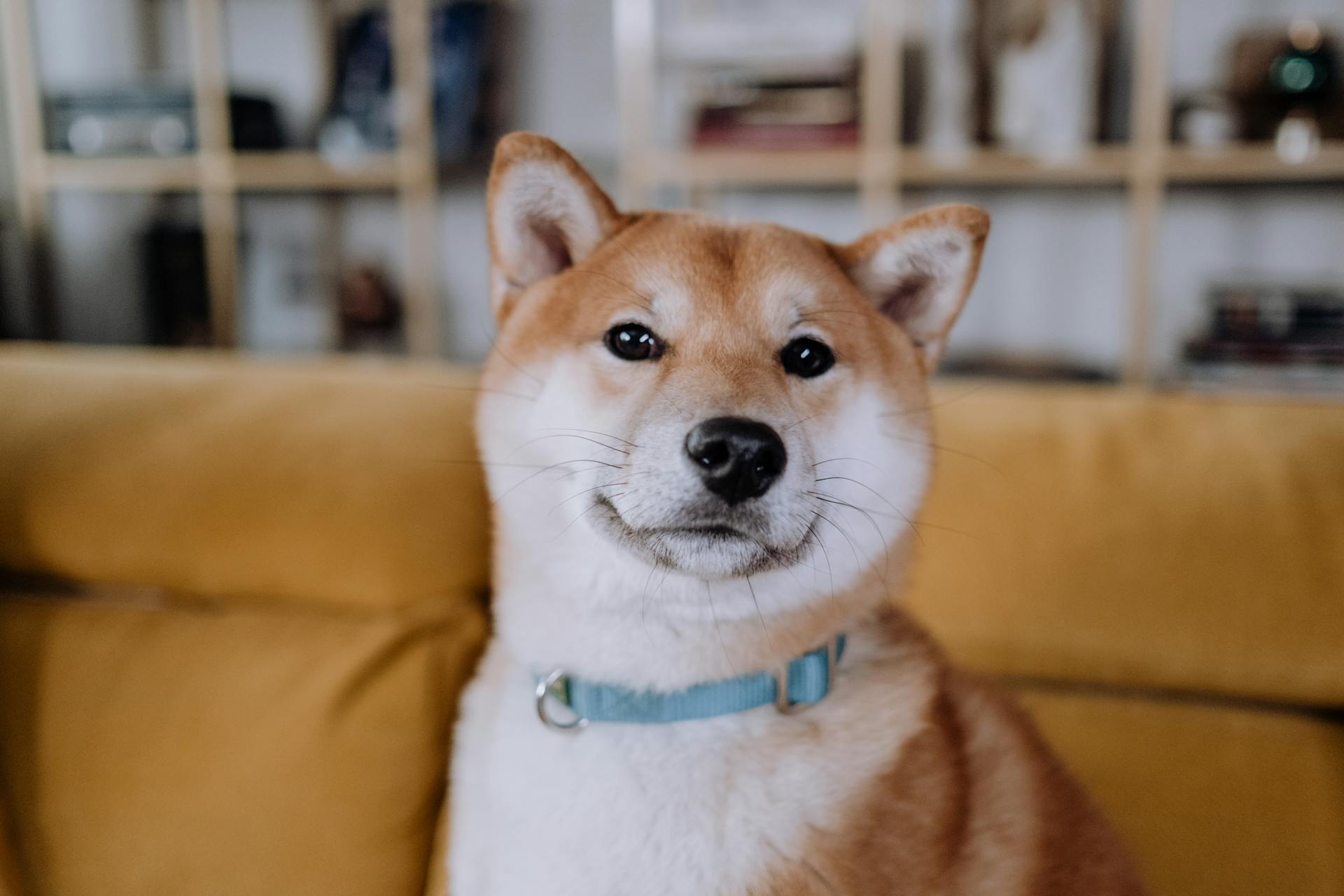
A dog head halter is a type of dog training equipment that fits around a dog's muzzle and head.
It's designed to give you more control over your dog's movements, especially during walks or in situations where they might pull on the leash.
The head halter works by applying gentle pressure to the dog's nose and chin when they pull, which helps to steer them back in the direction they should be going.
By using a head halter, you can help your dog learn to walk by your side without pulling on the leash.
These devices are particularly useful for dogs that are strong pullers or have a history of lunging or barking at other animals.
A well-fitting head halter is essential for effective use, so be sure to choose one that fits your dog's head comfortably.
With regular use and practice, a head halter can help you to establish a more peaceful and enjoyable walking experience with your dog.
Frequently Asked Questions
What are the disadvantages of a halti?
Head halters can create resistance and have an unpleasant effect on dogs, even if they don't fight it. This can be due to the psychological impact of wearing a halter, making it a consideration for dog owners.
Are dog head halters safe?
Unfortunately, dog head halters can cause physical injury and stress, making them a potentially hazardous training tool. Learn why we advise against using them in our training methods
Are head halters good for reactive dogs?
Yes, head halters can be a helpful tool for managing reactive dogs, especially in situations where they become overly fixated on other dogs. Using a head halter during training and walks may help improve their behavior and reduce reactivity.
Do head halters stop barking?
Head halters can help reduce barking by redirecting your dog's attention and discouraging lunging, but they may not completely eliminate barking. They work best when used in conjunction with proper training and behavior modification techniques.
Sources
- https://vcahospitals.com/know-your-pet/head-halter-training-for-dogs
- https://www.betterpetsandgardens.com.au/pet-care/dogs/training-and-socialising/when-and-how-to-use-a-dog-head-halter/
- https://wholedogcamp.org/2021/08/23/why-head-halters-are-an-essential-element-of-force-free-training/
- https://www.cannyco.com/blogs/dog-walking/what-is-a-dog-head-collar
- https://www.instructables.com/DIY-Dog-Halter-Head-Collar/
Featured Images: pexels.com

